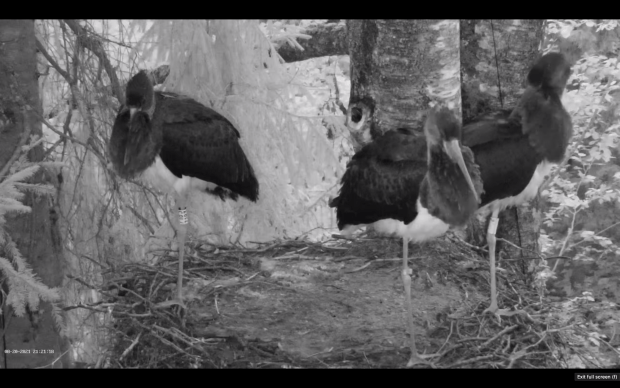In the first chapter of her book, Field Notes from an Unintentional Birder, Julia Zarankin talks about the rather spartan apartment she had as a graduate student. She talked about the compromises with her husband’s collection of 300 stone elephants only to realize what happened when she discovered birds. She said: “Within a year, the barometric pressure in my apartment shifted. Stuffed-animal squeaky hooded warblers learned to coexist with tigers; bird-shaped vases stood next to the elephant-shaped salt shaker; sculpted owls flirted with the faux-malachite elephant’s plastic tusks…more frightening: a pile of bird-themed stationary of every persuasion and a shelf dedicated to field guides…Not to mention the nondescript felt bird, the two paintings of birds, and the stained glass owl..” Later she adds the parrot notebooks, bird-themed t-shirts and all the bird magazine subscriptions. How many of us see ourselves in those same words?
I was, despite all of the warnings by Zarankin, delighted to see Emry Evans’s book, Monty, in the post along with some pins. The Dyfi online shop is now open. All of the nature centres will ship overseas. Roy Dennis’s Wildlife Fund has his three books and shipping internationally is calculated at check out. Lots of good things at all the on line shops for Osprey fans.
Emyr Evans writing is exceptional as are the images in Monty. Written with a deep, abiding love and respect for a bird – 50 stories from the pen of Emyr Evans.

It is a horribly grey day on the Canadian prairies. Will it snow or will it rain? Do birds get arthritis? Would they like a heated area to warm their little feet? Those are the silly thoughts that have gone through my head today.
Dyson decided it was best to just be off the snow altogether and sit in the tray feeder filling his cute little face.

Dyson doesn’t share. He is like Ervie, the Port Lincoln super star fledgling who grabbed the first fish of the morning from dad at 6:50:24. Oh, I love this image of Ervie in front of Dad grabbing that fish with his leg just like Mum does. Ervie watched and learned. Sorry, Bazza.

Falky just loves to fly and he was much more interested in checking out the area than the first fish. He flew in just a little too late.

Falky’s landings are actually really good. Ervie did a few spins yesterday and wound up landing on Bazza – Ervie needs landing training. That is great form that Falky has on this landing. Ah, the lads will all improve. This flying thing is just new. What fun it must be to whip around the bay!
Now Bazza – it is your turn!

Diamond brought prey in for Yurruga at 07:09. Yurruga was ready!

I thought Diamond would drop the prey and leave like Xavier but she had a different idea.

Diamond who incubated the two eggs during the night decided she was also going to feed her nestling.
Look carefully. Yurruga is changing. The white down is really coming off those wings and the head. She looks like a bird, not a fluffy column with a sort of bird head. Even, the fur boa is disappearing.

You can see the pin stripes on Yurruga’s chest and her head now looks like that of a falcon. Amazing. Equally impressive is the length of Yurruga’s tail. What a gorgeous Peregrine Falcon she is going to be.
Ah, and if you are watching the dates, Izzi fludged a year ago today. Izzi is the 2020 hatch of Diamond and Xavier and quite the character.

Oh, such delight. There is no news – at least not yet today – on Grinnell. I hope he is ready to be released shortly. And no news on WBSE 27 but there was a gorgeous Galah in the nest this morning poking about.

One of the Aussie chatters always said that if someone called you a ‘galah’ it meant that you were rather ‘slow, dim witted’. Ah, terrible. They are such incredibly beautiful pink and grey cockatoos. A few minutes of a cute bird that loves to have ‘tickle tickle’.
Bazza still has plenty of time to fly today but I don’t. Thank you for joining me — and if you loved Monty, you seriously need to get to the Dyfi store and get a signed copy of Emry’s book. I promise you will not be sorry but you will need a box of tissues. Take care. See you soon.
Thank you to the following for their streaming cams where I took my screen captures: the Port Lincoln Osprey Project, Sea Eagles @Birdlife Australia Discovery Centre, and Charles Sturt University Falcon Cam and Cilla Kinross.































































































































